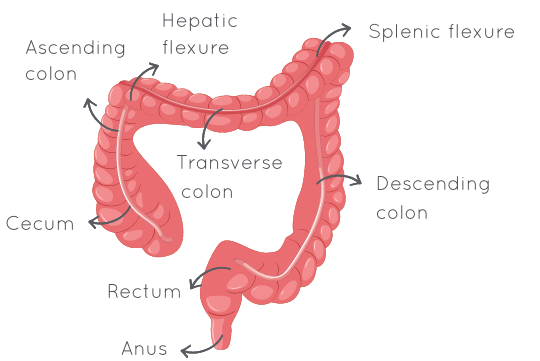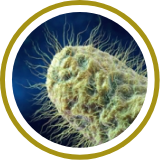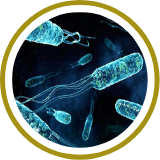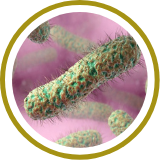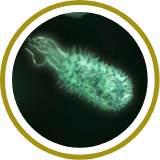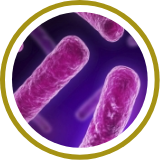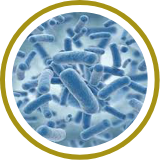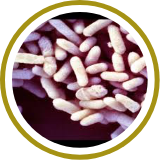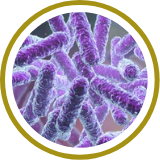Bifidobacterium Longum also called Bifidus, belongs to
the family of lactic acid bacteria. They participate in the
fermentation of milk as part of the manufacture of
cheeses and preparations similar to yogurt. She
makes up the bulk of the intestinal flora of
newborn fed breast milk because it contains a
disaccharide essential for its growth, and is also
present in the intestinal flora of the adult man in addition
low concentration.This is a probiotic whose quality
main thing is that it produces large amounts of acid
lactic acid, which leads to a drop in the pH which is
favorable and that would inhibit the growth of other germs.
Streptococus thermophilus, is a food bacterium,
thermophilic, present only in the fermentation of milk
and especially in yoghurt and emmental, the
County or Parmesan. This probiotic improves digestion
lactose.In children who have received a supplement of this
probiotic we could observe better growth on a
period of 6 months (Notchida & al.
severe inflammations of the digestive system and
particularly of the small intestine (Butler RN et al 2009).
This probiotic reduces the risk of diarrhea associated with
antibiotics, a problem that often results from taking this
family of drugs (Beauchamp, Kimberly, 2004). Else
research shows a sharp decrease in cancer
lung in mammals (Carper, 1993).
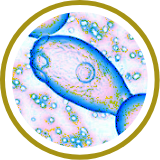
Saccharomyces Boulardii, is a tropical strain of yeast
isolated for the first time in 1923 from lychee fruits
and mangosteens, by the French scientist Henri Boulard.
It is after observing populations of Southeast Asia
chew the skin of lychees and mangosteens in order to try
to control the symptoms of cholera, that Henri Boulard
first isolated this yeast in 1923.
This yeast has the tremendous property of maintaining and
restore the intestinal flora of the large intestine as well as that of
the small intestine; we talk about probiotics. We discovered that in
ant that Probiotic S. Boulardii is more effective than the
bacterium Lactobacillus itself (Van den Plass 1999).
It has been shown that Saccharomyces Boulardii is
non-pathogenic, non-systemic (the yeast remains in the
digestive system rather than spreading everywhere in
the organism), and develops at the temperature
unusually high of 37 ° C (Egervärn M. et al, 2007).
The yeast Saccharomyces Boulardii is offered by SAN
under two packs of 30 and 60 capsules of 9 mg.
Lactobacillus casei, is a lactic acid bacteria isolated in the
milk, cheese and the gastrointestinal tract of man,
pig and birds. This probiotic Lactobacillus Casei
defensis comes from research (Djamel Drider and Hervé
Prévost 2009). This bacterium, of human origin, used
like probiotic, fight Helicobacter pylori, responsible
many stomach ulcers (Sachdeva 2009).
This probiotic has also been shown to be effective in
prevention of antibiotic-related diarrhea (Hickson
2007). it is also proven that these bacteria can
significantly reduce the risk of re-offending
superficial tumors of the bladder in humans (Aso, 1992,
1995). Finally, current research shows a clear
reduction of allergies, prevention of the spread of
Salmonella (Paubert & All 1995), a reduction in
inflamation of the intestines and the development of
colorectal adenomas in mammals.
Lactobacillus acidophilus, is a lactic acid bacteria, isolated
in humans in the 1970s. This probiotic has the
great property to develop antagonistic activity
against certain pathogens of food products
such as Staphylococcus aureus, Salmonella typhimurium,
Escherichia coli and Clostridium perfringens (Sanders 2002).
It is generally considered that the dominant species of
the vaginal flora of the healthy woman belong
at the Lactobacillus acidophilus complex (Vasquez, 2002).
Finally the administration of the probiotic accompanied
of antibiotics leads to a decrease in colon tumors
in mammals (Goldin 1984).
Lactobacillus reuteri, is an intestinal lactobacterium that has
developed traits highly adapted to life in the
digestive tract of humans. The presence of the bacteria
Lactobacillus reuteri is often in breast milk
(Sinkiewicz 2008). Research has shown that infants
fed at Lb. reuteri fall less often sick,
require fewer visits to the doctor, and are less
absent from daycare (Tubelius, 2005).
This probiotic produces reuterin and reutericycline,
antimicrobial and antibiotic substances from a broad
spectrum that inhibits the growth of certain harmful bacteria
this without destroying the intestinal flora of lactic acid bacteria
while improving the ability of the tract to inhibit the
growth of Escherichia coli (Cleusix V et al., 2004).
Isolated from oral flora, it can also improve health
dental disease, by fighting Streptococcus mutans, a
bacterium responsible for tooth decay (Nikawa, 2004).
The strain of human origin Lactobacilus Reuteri used
in the proposed ferment is ATC 55730.
Gasseri, The genus Lactobacillus represents the
lactic acid bacteria group, the most
ubiquitous. Indeed, these colonize all
habitats containing carbohydrates
fermentable, hydrolysis products
proteins, vitamins,
growth and a low oxygen content.
More particularly, the species Lactobacillus
Gasseri is naturally present in
the digestive tract of man and animals.
The strain Lactobacillus Gasseri THT 031301
has, in turn, been isolated from a human gut.
Bifidobacterium animalis is a species of
lactic acid bacteria of the family of
Bifidobacteriaceae, isolated in materials
faeces of most animals (pigs,
rats, chickens etc.) and men. It exists
two subspecies animalis and lactis, the
first animalis, isolated materials
faeces of the rat and the second lactis isolated from
that of chicken and rabbit as well as milk
fermented, sewers and recently
human stools. Like those used
in our ferments. Properties
probiotics of two lactis strains
DN-173010 and lactis BB-12 were very
studied. They come in products
widespread trade. This bacterium
found in all mammals and is
therefore very important in humans.
Bifidobacterium (nom vernaculaire
bifidobactérie ou bifidusn 1 ) est un genre
d’actinobactéries bifidobactériales (en)
anaérobies à Gram positif. Ces bactéries sont
constituées de bacilles de forme irrégulière,
anaérobies stricts, présentant un test négatif
pour la catalase, immobiles. Les
bifidobactéries appartiennent à la famille
des bactéries lactiques. Elles participent à la
fermentation du lait dans le cadre de la
fabrication de fromages et de préparations
similaires aux yaourts1. De plus, elles
produisent de grandes quantités d’acide
lactique, ce qui entraîne une baisse du pH qui
leur est favorable et qui inhiberait la
croissance d’autres germes Capable de
métaboliser beaucoup de fibres et être en
compétition avec les sources de carbone.
Lactobacillus helveticus is a bacteria in
form of producing stem. It has been shown that
the consumption of fermented milk powder
with L. helveticus decreases the pressure
arterial through the presence of tripeptides
who have enzyme inhibiting activity
conversion1. However other studies
show contradictory results2,3,4.
She is also able to metabolize
a lot of fiber and also power
to compete with sources of
carbon. The name of the bacteria is derived
of Helvetia, the Latin name of Switzerland.
 We offer you a wide range of ferments, from daily to 10 days, including junior, femina and even senior.
We offer you a wide range of ferments, from daily to 10 days, including junior, femina and even senior.
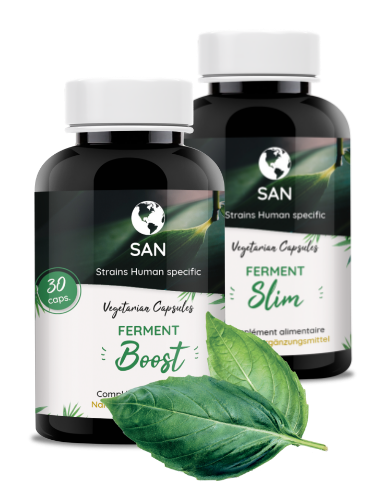
 How it works ?
How it works ?
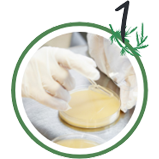
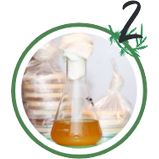
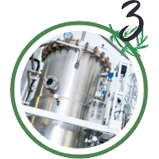
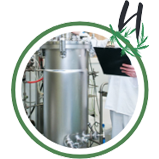
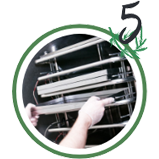

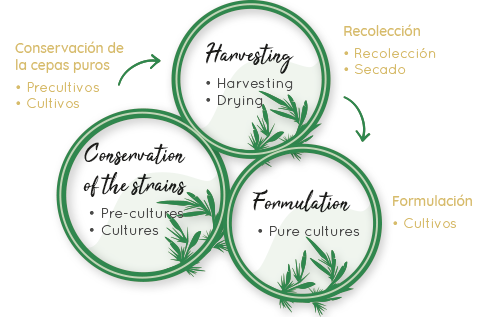

 Small intestine
Small intestine

